10 Product-led Growth Examples to Inspire Your Strategy in 2023

Elevate your SaaS strategy by harnessing the power of Product Led Growth (PLG) – the most potent tool in the SaaS arsenal. It’s not just a buzzword; it’s a strategy that has transformed businesses and propelled them into a new realm of customer success everywhere. The secret behind PLG’s success lies in the fact that it makes the product the hero, allowing it to sell itself, and freeing up your team to focus on scaling and innovation.
What is a Product Led Growth? A Quick Refresher
Product-Led Growth (PLG) is a transformative business strategy that elevates your product as the primary catalyst of customer acquisition, engagement, retention, and expansion. By embracing PLG strategies, you place your product at the heart of your organization’s drive for sustainable and scalable growth, shifting the focus from traditional sales or marketing-led initiatives. In essence, the product emerges as the main vehicle for growth. Its design and functionality are meticulously refined to fuel a self-perpetuating cycle of growth. It’s about letting your product speak, sell, and scale for itself.
A Product-led growth model forges a powerful product and dedicates your sales team only to its success. When your entire organization stands behind a single product, it creates an unrivaled customer experience that delivers value from the outset.
PLG products rise to fame through organic growth, primarily driven by word-of-mouth publicity, and require minimal reliance on traditional marketing and sales strategies. They are renowned for their seamless sign-up process, immediate value delivery, free trial or freemium approach, and product led business growth.

But how can businesses leverage this strategy effectively? Let’s consider a few successful product-led companies and what they’ve done 👇🏼
Survey Monkey
SurveyMonkey is a highly effective tool for any SaaS strategy, offering an intuitive platform that excels in data collection, market research, and user feedback. Its user-friendly interface and robust functionality make it an invaluable asset for businesses looking to make data-driven decisions. It’s one of the classic product-led growth company examples!
SurveyMonkey has proven itself as a powerful tool for understanding customer behavior and preferences. For a SaaS company, understanding user needs is fundamental to product development, service improvement, and customer satisfaction. SurveyMonkey can help businesses analyze customer feedback and uncover critical insights, providing a crucial competitive edge.
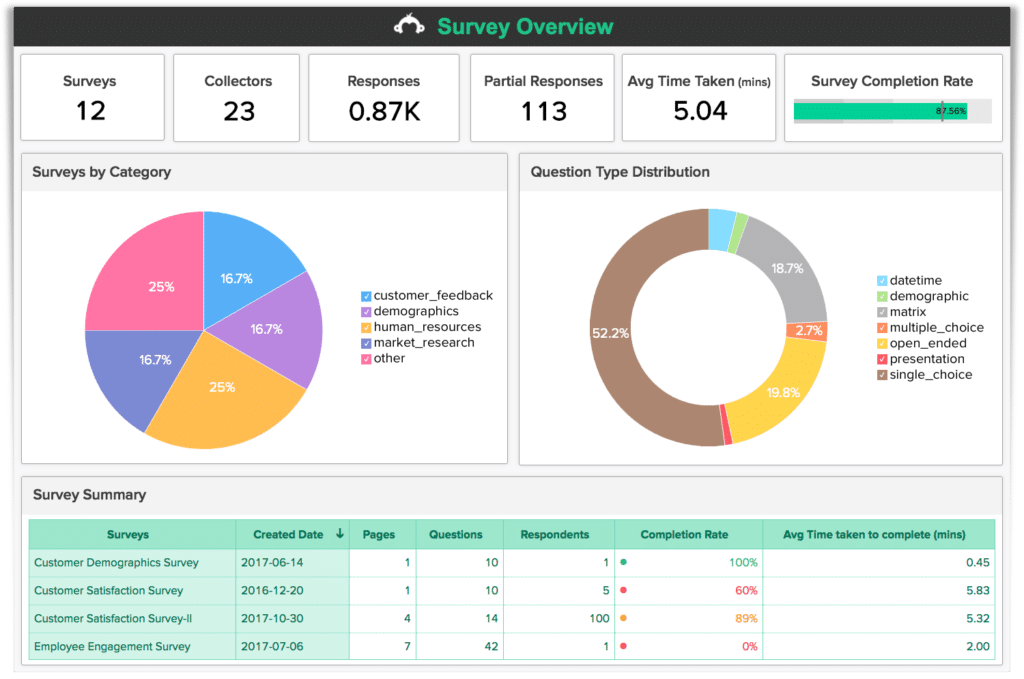
One of the standout features of SurveyMonkey is its extensive library of pre-built survey templates. These templates save time, allowing you to focus on interpreting results rather than creating surveys from scratch. Plus, the customization options ensure that the surveys align with your brand, creating a consistent user experience.
SurveyMonkey’s ease of use extends to its data analysis tools. It offers clear and easy-to-understand analytics that allow even non-technical users to gain valuable insights. This democratization of data can enhance your SaaS strategy by allowing everyone in your organization to understand and act upon customer feedback.
The platform’s built-in virality is also a significant advantage. Every time a customer completes a survey, they are exposed to the SurveyMonkey brand. This can lead to organic growth and an expanded user base.
Furthermore, SurveyMonkey’s seamless integration with other software services like Freshdesk enables a smooth workflow. It can easily fit into your existing tech stack and enhance your processes without causing disruption.
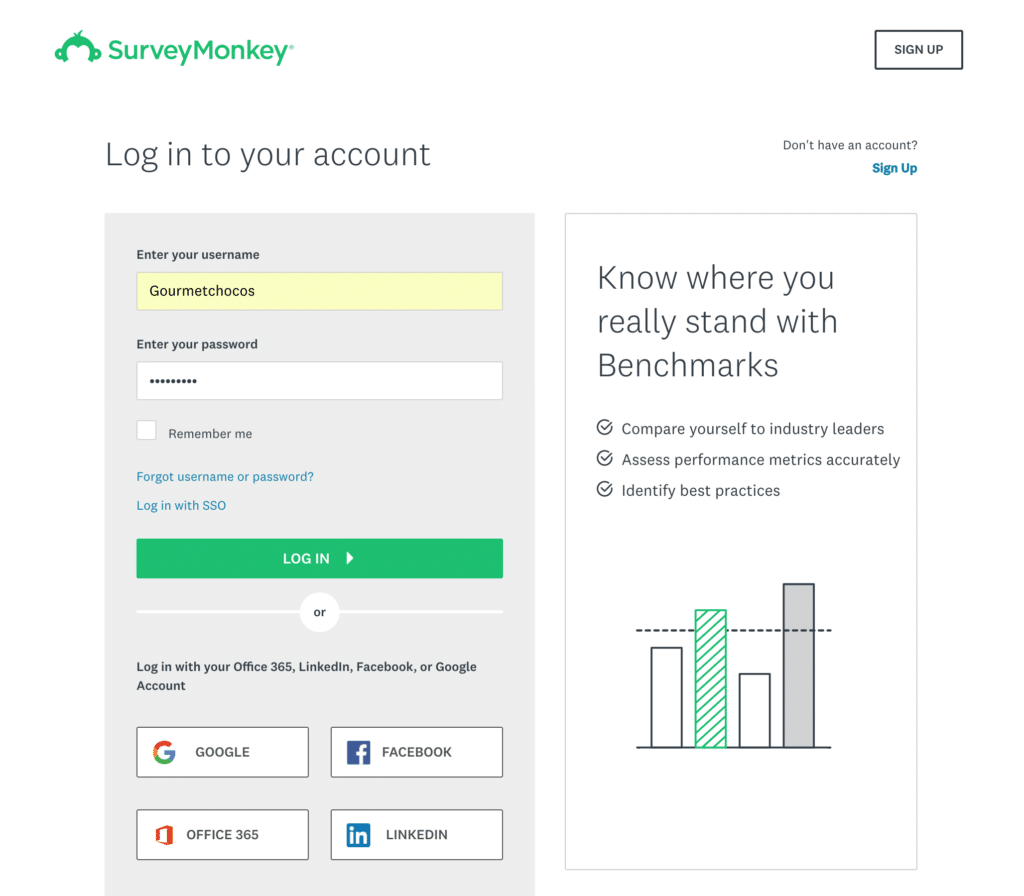
💡What do I like about Survey Monkey’s Product Led Growth Strategy?
I find SurveyMonkey’s Product-Led Growth (PLG) strategy to be truly ingenious. The built-in virality of the product is what strikes me as most brilliant. It leverages its customers’ needs to conduct surveys, inherently promoting the tool itself. Every time a survey is conducted, a new group of potential users is exposed to the platform. This kind of organic growth strategy, where the users themselves are the primary marketing tool, is both cost-effective and highly impactful.
Moreover, I appreciate that SurveyMonkey offers a simple, user-friendly interface that delivers immediate value. This straightforward approach reduces barriers for new users and accelerates their journey from first-time users to brand advocates.
What’s also noteworthy is how SurveyMonkey’s PLG strategy aligns perfectly with the concept of ‘self-serve product’. The more the platform is used, the more it’s promoted. This self-sustaining business model also ensures consistent growth and greater market penetration. It’s a strategy I believe many SaaS companies can learn from.
Calendly
One of the best product-led growth examples, Calendly is an indispensable tool for any SaaS strategy, thanks to its ability to streamline and simplify the often complex task of scheduling meetings. With an intuitive interface and robust functionality, Calendly eliminates the back-and-forth emails typically associated with coordinating meetings, saving valuable time and increasing productivity.
For a SaaS business, the ability to easily schedule meetings with customers, partners, and team members is crucial. Calendly enables this by providing a seamless scheduling experience. It allows users to set their availability and share personalized scheduling links with others. This not only facilitates easier interactions but also presents a professional image to customers and partners.

What makes Calendly particularly beneficial for a SaaS strategy is its compatibility with a variety of calendar systems such as Google, Office 365, and Outlook. This ensures smooth integration into your existing workflow, regardless of the calendar system you are currently using.
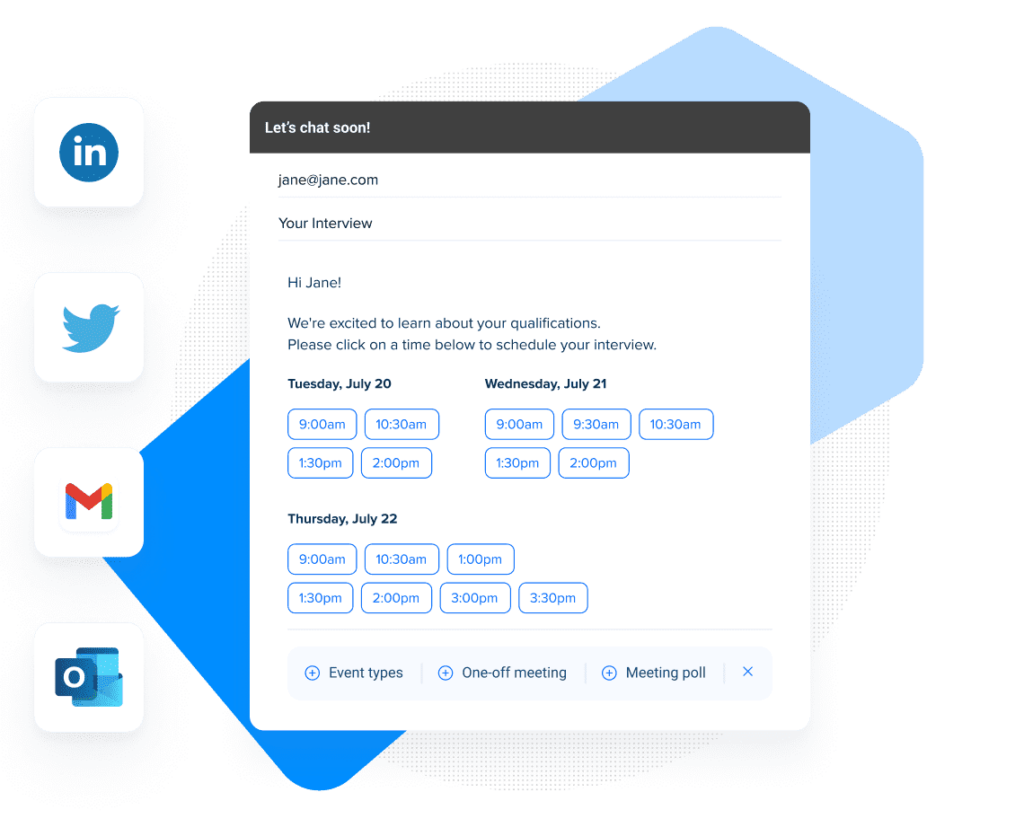
In addition, Calendly’s automatic time zone detection is a standout feature. For SaaS companies operating across different geographies, this is a game-changer. It eliminates the confusion that often arises from scheduling meetings across time zones, ensuring a smoother and more effective communication process.
Moreover, Calendly’s inherent virality can be leveraged to boost user acquisition. Each time you send a Calendly link to schedule a meeting, you expose the recipient to the platform. This exposure can lead to organic growth, a critical aspect of any successful SaaS strategy.
Calendly also offers robust integration capabilities with other software tools, such as video conferencing platforms and CRM systems. This makes it an excellent fit within a diverse SaaS tech stack, boosting productivity and effectiveness.
💡What do I like about Calendly’s Product Led Growth Strategy?
Calendly ingeniously harnessed the power of network effects with their consistent K-factor strategy, effectively turning each user into an ambassador for their platform. Every time a user schedules a meeting, it naturally extends an invitation to others, subtly introducing Calendly and enabling users to the solutions it provides for their scheduling needs. This brilliant strategy amplifies user growth and boosts the platform’s visibility.
What’s a K-factor strategy?
A K-factor strategy refers to a growth metric used to measure the viral growth of a product or service. It quantifies how many new users, on average, each existing user is bringing into the platform, thus indicating the effectiveness of word-of-mouth or viral marketing.
Moreover, Calendly’s Freemium plan was a masterstroke. By offering users the ability to schedule meetings for FREE with up to one event type, they’ve successfully attracted a massive user base. This approach not only broadens their reach but also sets the stage for sales-led approach, potential upselling and premium subscriptions. Indeed, Calendly’s tactics are a prime example of innovative growth strategies in action!
Slack
One of my favorite product-led growth examples, Slack is a trailblazer in the realm of team communication and collaboration, making it an essential addition to any SaaS strategy. Providing an integrated, organized, and easily accessible platform for internal communication, Slack can greatly enhance productivity, team cohesion, and overall operational efficiency.
In the context of a SaaS strategy, Slack’s channel-oriented design is an invaluable feature. It allows for the creation of dedicated channels for different projects, teams, or topics. This not only ensures that the right people have access to relevant information but also helps keep conversations and resources organized, reducing time wasted on searching for information.
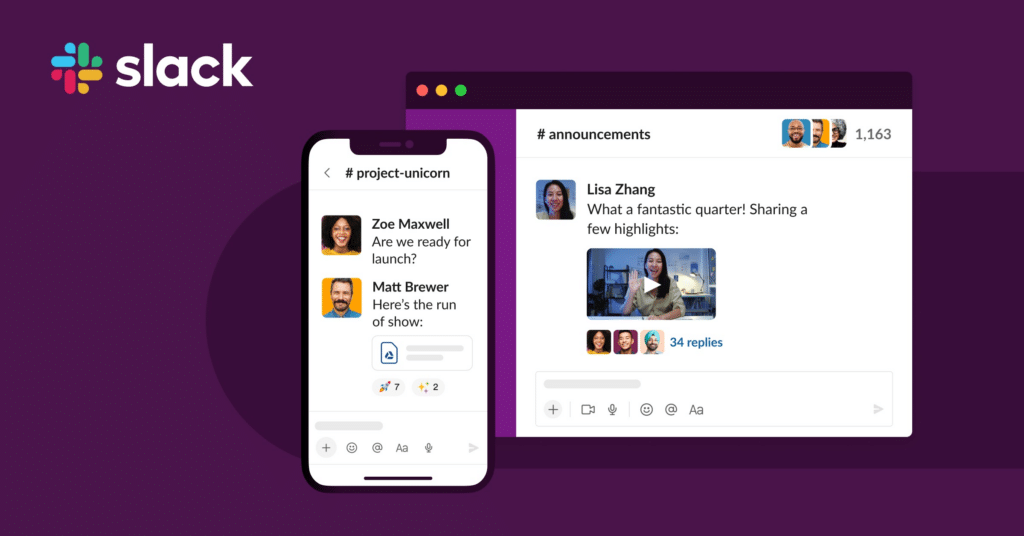
Furthermore, Slack’s powerful search functionality allows users to find past conversations and shared files easily, which can be a significant time-saver and a boost to productivity. This centralized repository of information can also serve as a knowledge base, facilitating more efficient onboarding and continuous learning within the team.
Slack’s integration capabilities are another standout feature that can support a SaaS strategy. It can seamlessly integrate with a multitude of other SaaS tools, from project management platforms to customer support software. This can create a more streamlined workflow, reducing the need for app-switching and improving the team’s productivity.
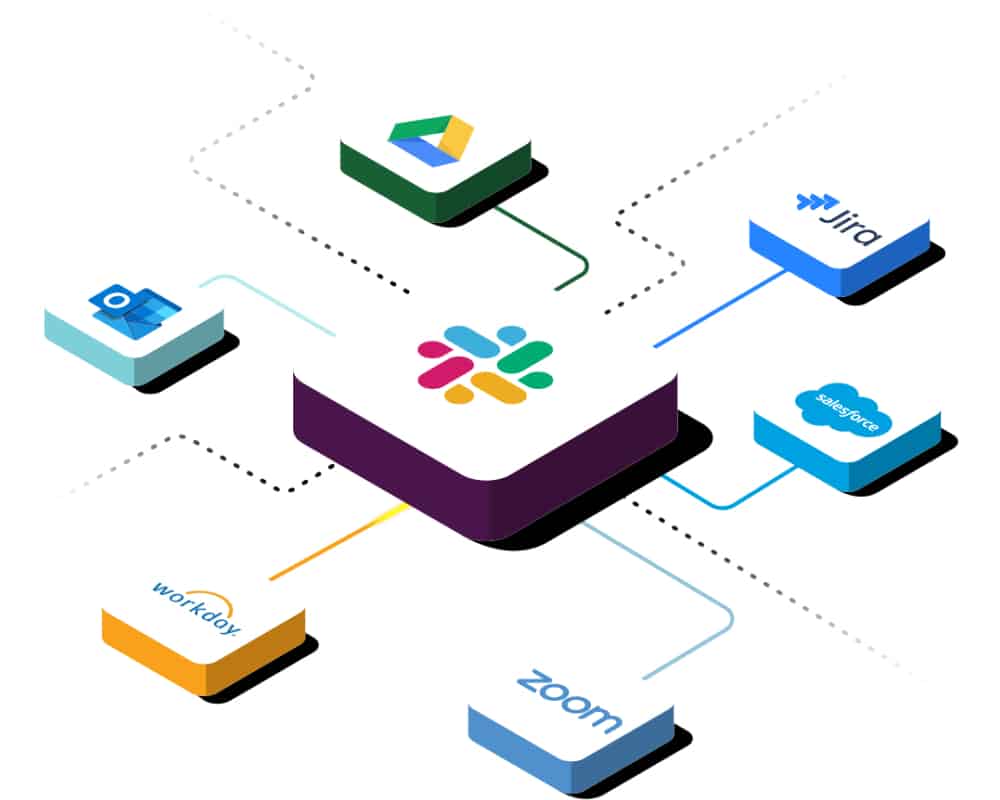
In terms of user acquisition and retention – critical aspects of a SaaS strategy – Slack’s value increases the more people within an organization use it. This network effect can encourage adoption within companies and increase the perceived value of the platform, and lower customer acquisition cost thus boosting user retention.
Lastly, Slack’s API offers the opportunity for custom integrations and the creation of bots, which can automate routine tasks and drive efficiency.
💡What do I think of Slack’s Product Led Growth Strategy?
What I genuinely admire about Slack’s Product-led growth model is its focus on collaboration and the positive user experience there. By designing a platform that is intuitive and user-friendly, Slack has made itself indispensable for team communications. The fact that it’s built for in-organization networking and encourages collaboration makes it a tool that naturally spreads throughout a company. This not only increases adoption rates but also enhances the product’s value for each user as more colleagues join in. It’s a brilliant example of a PLG strategy where user satisfaction drives expansion and growth.
Productboard
Productboard is a standout product management platform, adept at streamlining the complex process of planning, prioritizing, and delivering products. It can be a game-changer for a SaaS strategy or product marketing-led growth company, providing the necessary tools to orchestrate product development, align teams, and optimize customer value delivery.
The first way Productboard benefits a SaaS strategy is through its robust feature prioritization mechanism. It allows you to gather insights from all stakeholders, including customers, to prioritize features based on their potential value and impact. This data-driven approach helps ensure your resources are deployed where they can generate the maximum return, a critical aspect for SaaS businesses operating in a highly competitive market.
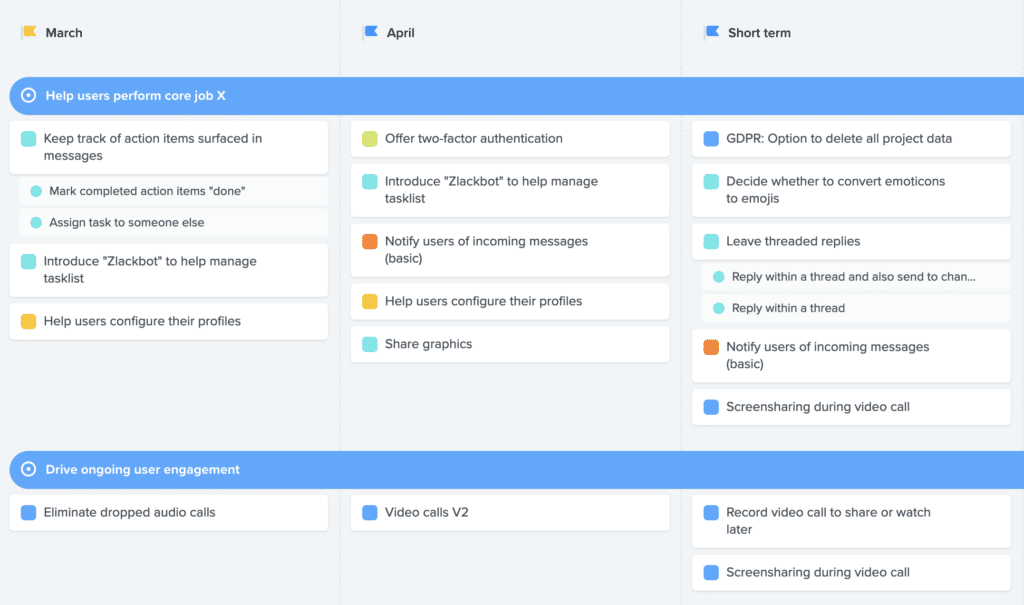
Productboard also shines in facilitating cross-functional alignment. The platform acts as a central hub, creating a shared understanding of the product strategy among all teams – from development and marketing teams to the sales teams and support. This alignment is key to maintaining efficiency and cohesion in fast-paced SaaS environments.

Another area where Productboard excels is in its roadmap visualization capabilities. It provides a transparent, flexible, and easily digestible view of the product strategy and progress. This can aid in stakeholder communication and buy-in, another vital aspect of a successful SaaS strategy.
Moreover, Productboard offers a user-friendly portal for capturing and organizing customer feedback. This allows for a customer-centric approach, aligning your product development with the needs and expectations of your users – a fundamental principle for SaaS success.
Finally, Productboard’s integration capabilities enable it to fit seamlessly into your existing tech stack. This interoperability ensures that your teams can work within a unified, streamlined ecosystem, further enhancing productivity.
💡What do I think of Productboard’s Product Led Growth Strategy?
What I find particularly impressive about Productboard’s Product Led Growth (PLG) strategy is how they’ve addressed a real pain point for businesses: bringing transparency and organization to product management. Their platform allows for the collection and processing of user insights, the creation of flexible roadmaps, and the building of coherent product strategies. By providing a tool that effectively empowers managers and teams, they’ve made themselves indispensable within the product development process. Plus, the fact that the platform encourages users to share their experiences and advocate for the product within their professional circles shows a deep understanding of PLG: your users are your best marketers. It’s a well-executed strategy that clearly puts the user at the center.
Dropbox
Dropbox is a powerful cloud storage solution that’s more than just a place for storing files. It provides a robust suite of tools that can significantly enhance the efficiency and effectiveness of your SaaS strategy.
One of Dropbox’s core strengths is its seamless file-sharing and collaboration capabilities. This makes it an excellent tool for team collaboration, allowing members to work together on documents in real-time, regardless of their location. For a SaaS business, this can greatly enhance productivity and facilitate efficient knowledge sharing.
Dropbox also excels in its integration capabilities. It can seamlessly sync with a multitude of other software and tools, thus creating a streamlined workflow for your team. This interoperability allows SaaS businesses to create a unified, efficient tech ecosystem, which is a crucial aspect of a successful SaaS strategy.

Additionally, Dropbox’s scalability is a significant advantage for SaaS businesses. As your business grows, Dropbox can effortlessly scale alongside it, providing more storage and features as required. This flexibility can be vital for a growing SaaS business, as it ensures that your cloud storage solution can adapt and grow with your business.
Dropbox’s robust security features, including encryption and two-step verification, are another boon for a SaaS strategy. Ensuring the safety and security of your data is paramount in the SaaS industry, and Dropbox provides the tools to do just that.
The platform’s easy-to-use interface is another of its strong points. It reduces the learning curve for your team, thus saving time and resources that could be better spent elsewhere in your business.
💡You can navigate through your files effortlessly with our visual thumbnail view, and gain clarity on collaboration with visible indications of who’s working on shared files and folders with you.
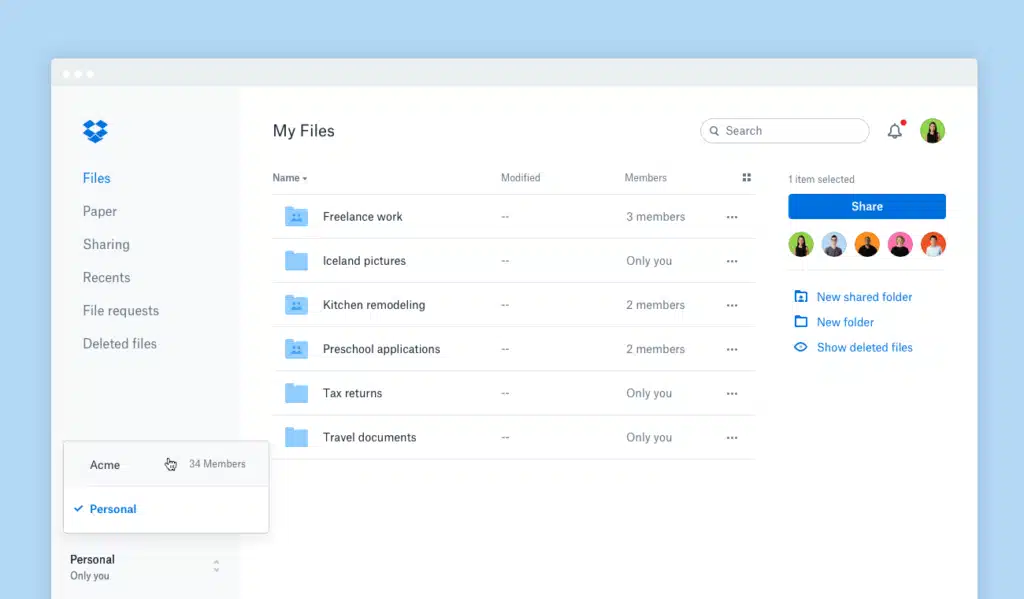
💡What do I think of Dropbox’s Product Led Growth Strategy?
I’m truly impressed with Dropbox’s Product Led Growth (PLG) strategy. They’ve ingeniously built virality into the very DNA of their product, making sharing and collaboration an integral part of the user experience. By simply sharing a Dropbox link or a collaborative folder, users effectively become advocates, expanding the product’s reach with minimal effort. The freemium model and referral bonus options are also clever strategies to incentivize users to spread the word about Dropbox. This not only encourages user engagement but also ensures continuous growth for the platform. Dropbox’s strategy is a prime example of how focusing on the user’s needs and incorporating sharing into the product’s functionality can result in exponential growth and market dominance.
DocuSign
DocuSign is an exceptional e-signature tool that can significantly elevate the effectiveness of a SaaS strategy. It’s not just a tool for signing documents electronically; it’s a comprehensive solution for managing agreements that can streamline your business processes.
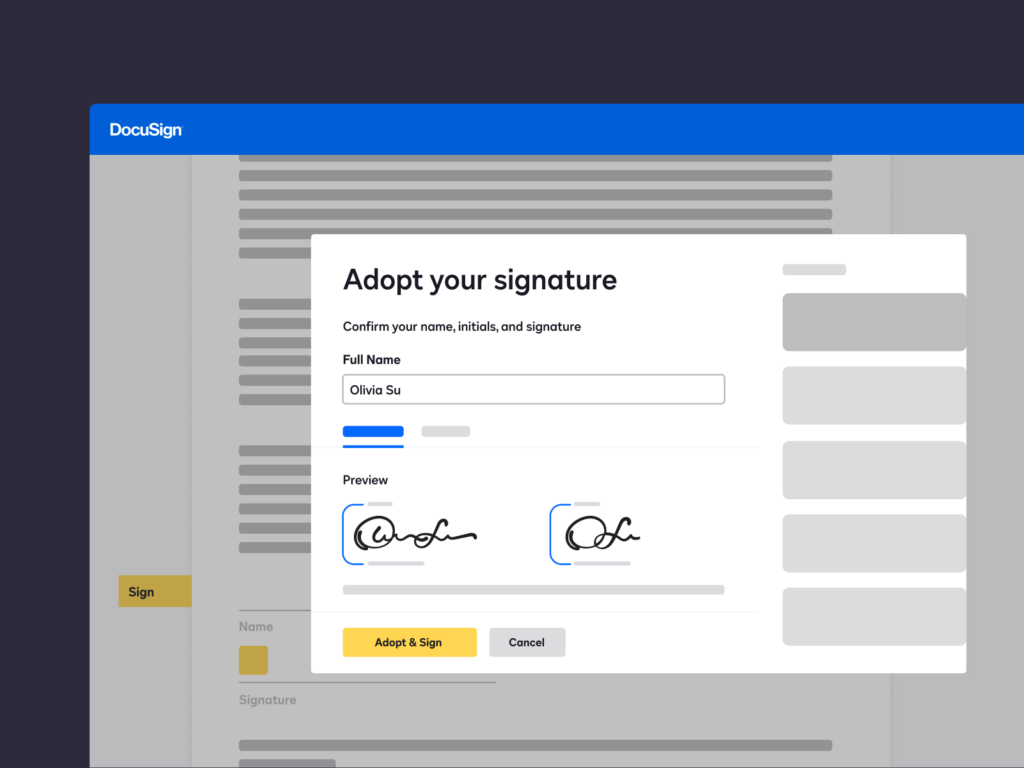
One of the key benefits of DocuSign is its ability to expedite agreement cycles. By digitizing the signature process, you can get contracts and agreements signed faster, thus speeding up sales teams’ cycles. For a SaaS business, this can directly translate into quicker revenue recognition.
DocuSign’s robust integration capabilities make it an essential tool for SaaS businesses. It seamlessly connects with a wide range of other software, from CRM platforms like Salesforce to productivity tools like Slack. This can help create a cohesive, streamlined workflow for your team, which is crucial for an effective SaaS strategy.

Furthermore, DocuSign’s global legality and compliance are major advantage. It complies with the e-signature laws of many countries and offers robust security features, ensuring that your documents are legally binding and secure. For a SaaS business operating globally, this is invaluable.
DocuSign’s user-friendly interface simplifies the process of sending, signing, and managing agreements, making it accessible for users with varying levels of technical proficiency. This ease of use can save your team valuable time and resources, contributing to a more efficient SaaS operation.
The platform’s scalability is another significant benefit. As your business expands, DocuSign can grow with you, accommodating an increasing volume of documents and users.
💡What do I think of DocSign’s Product Led Growth Strategy?
What I deeply appreciate about DocuSign’s Product-Led Growth (PLG) strategy is their focus on accessibility and immediacy of value. Their strategy of letting anyone open a free trial account and start using the product right away lowers the barrier for new users and is extremely effective in hooking them in.
Their pricing model, which is dependent on the number of users you want to send documents to, is another ingenious strategy. It not only scales with the business but also encourages free users to become promoters, driving the product’s conversion. This strategy has enabled them to reach sectors like judicial and legal institutions where marketing a product is usually challenging.
Canva
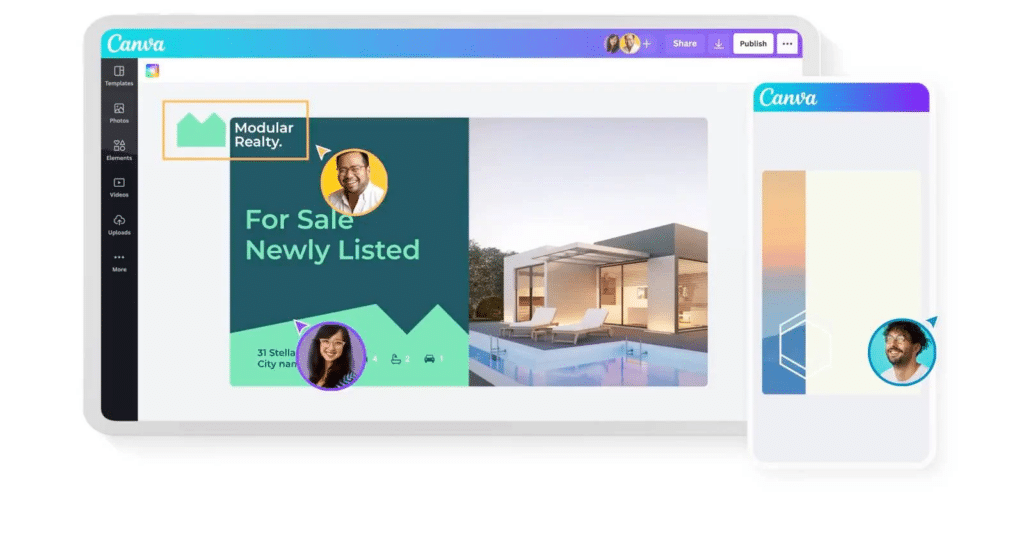
For B2B SaaS companies, Canva can play an integral role in shaping effective marketing and customer engagement strategies.
Canva’s intuitive interface and extensive design options make it a powerful platform for creating professional marketing materials. From social media graphics, presentations, and infographics to eBooks and whitepapers, the quality of visuals you can produce with Canva is unparalleled. This is a massive boost for SaaS companies, who often need to communicate complex product features and benefits in a straightforward and visually appealing manner.
The platform’s collaborative features are another significant benefit for B2B SaaS companies. Teams can work together seamlessly on designs, providing comments, making real-time edits, and sharing effortlessly. This fosters greater creativity and efficiency in content creation, crucial for SaaS companies working in agile environments.
Canva also offers the ability to maintain brand consistency with customizable brand kits, which is a vital aspect of B2B SaaS strategies. With brand kits, companies can quickly apply their logos, color palette, and typography across all their designs, ensuring a consistent brand image.
In terms of lead generation and customer engagement – both vital for B2B SaaS success – Canva’s interactive presentation features can enhance webinars, demos, and virtual meetings. Infographics can simplify intricate data, making it more digestible for prospects and customers, thereby aiding in retention and conversion.
💡What do I think of Canva’s Product Led Growth Strategy?
Emotional resonance is the cornerstone of PLG (Product-Led Growth) models – and Canva has truly mastered this principle! They have positioned themselves as champions of design democratization and superior user experience, a commitment clearly articulated in their mission to enable everyone around the globe to design freely and publish anywhere.
Canva delivers exceptional value at an extraordinary speed. Wondering just how speedy? Take creating a Christmas card, for instance. We put it to the test and were astounded by the results – without even having an account, you can complete the entire process in a mere 52 seconds! That includes navigating to the website, choosing a template, customizing it to your heart’s content, and downloading your finished creation. With Canva, you can transition from exploration to creation to value realization in less time than it takes to make a cup of coffee!
Airtable
Airtable, a dynamic, flexible productivity tool, is a game-changer for businesses aiming to streamline their SaaS strategy. Its ability to serve as a highly customizable database system offers an array of possibilities for managing, organizing, and analyzing data, a crucial aspect of any SaaS business.
Airtable stands out for its user-friendly interface and robust functionality, allowing you to manipulate and visualize data in a way that aligns with your specific needs. It’s like a spreadsheet, but on steroids. This flexibility can be invaluable for a SaaS strategy, as it allows teams to adapt the platform to their unique workflows, rather than the other way around.

Moreover, Airtable promotes end-user empowerment with its low-code/no-code capabilities. Users can build their collaborative applications without extensive programming knowledge. This aspect is particularly useful in SaaS, where cross-functional collaboration is key, and solutions often need to be tailored to specific team requirements.
Another significant advantage is its integrative capability. Airtable plays well with other tools, including popular SaaS applications like Slack, GitHub, and Zapier. This means it can easily slot into your existing tech stack and help unify your workflows.
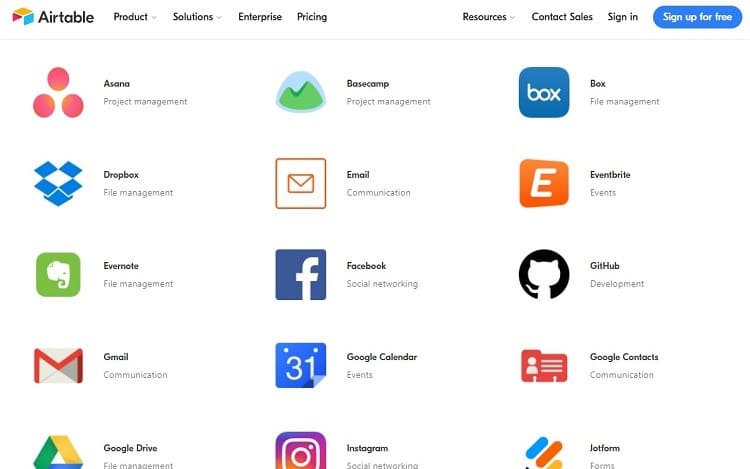
💡 What do I think of Airtable’s Product Led Growth Strategy?
What I admire about Figma’s Product Led Growth (PLG) strategy is its focus on accessibility and collaborative design. The dual access feature, which allows users to work on their designs both online and offline, effectively caters to a broader range of user needs. Moreover, by providing a freemium model with unlimited collaborations, they are cleverly capitalizing on network effects. Every time a user collaborates with another, they are indirectly promoting Figma, thereby fostering organic growth.
Figma
Figma, a web-based vector graphics editor and prototyping tool, has become a game-changer for many businesses, particularly those in the SaaS space. Its collaborative design functionality and user-friendly interface can help streamline the development and execution of your SaaS strategy.
A standout feature of Figma is its real-time collaborative design. This capability is extremely valuable in a SaaS strategy, where cross-functional collaboration is critical. Figma allows designers, developers, and stakeholders to work together on designs simultaneously, enhancing productivity and speeding up the design process.
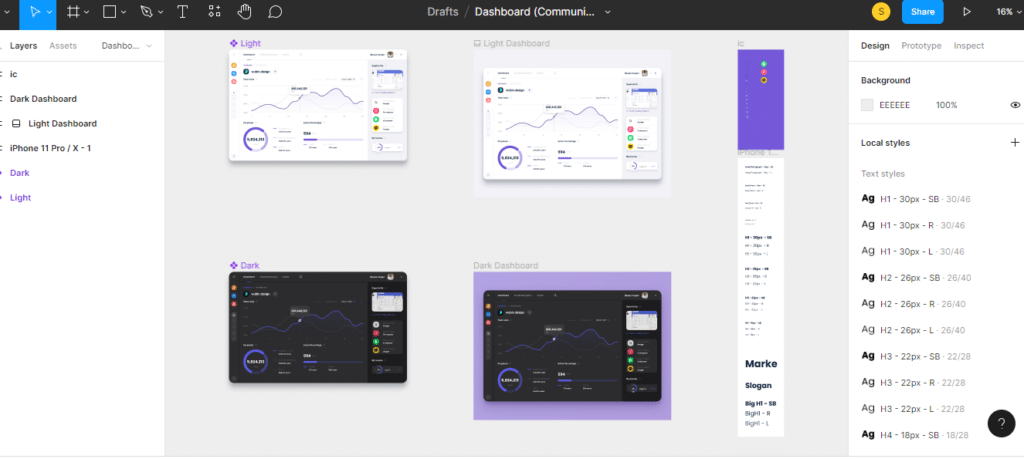
Moreover, Figma’s platform compatibility is a boon for SaaS businesses. Regardless of the operating system you or your team uses, Figma can be accessed seamlessly. This broad accessibility helps ensure that your entire team can contribute to the design process, thereby increasing productivity and the exchange of creative ideas.
Figma’s pricing model is also strategic for SaaS businesses. It offers a free starter pack, which is more than sufficient for small teams or startups. As your team and needs grow, you can upgrade to more feature-rich plans. This flexibility makes it an excellent tool for SaaS companies of all sizes and stages.
In addition, Figma allows for the easy sharing of designs and prototypes. This can be particularly useful when seeking feedback from users or stakeholders. This direct line of communication with your users can help ensure that your SaaS product aligns with user needs and expectations.
💡What do I think of Figma’s Product Led Growth Strategy?
What I admire about Figma’s Product Led Growth (PLG) strategy is its focus on accessibility and collaborative design. The dual access feature, which allows users to work on their designs both online and offline, effectively caters to a broader range of user needs. Moreover, by providing a freemium model with unlimited collaborations, they are cleverly capitalizing on network effects. Every time a user collaborates with another, they are indirectly promoting Figma, thereby fostering organic growth.
Logrocket
LogRocket is a front-end application performance management (APM) tool that can significantly enhance your SaaS strategy. It facilitates the process of identifying and rectifying issues that could affect user experience, directly contributing to the overall success of your SaaS product.
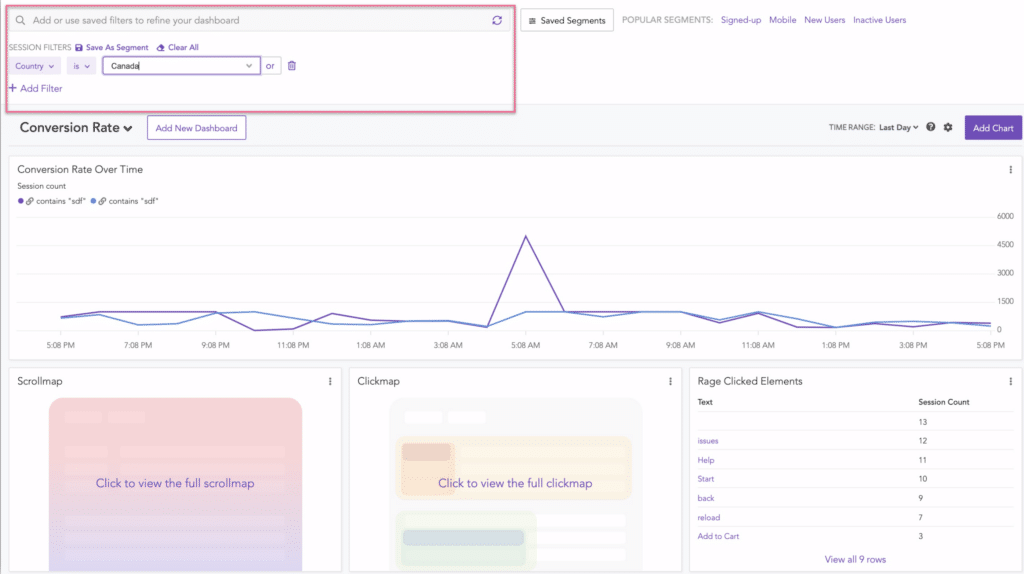
LogRocket offers exceptional user session replay capabilities, allowing you to literally see what your users see. This feature is invaluable in understanding how users interact with your product, and it aids in identifying areas where the user experience may be falling short. By addressing these areas, you can enhance user satisfaction and increase retention rates, both vital for a successful SaaS strategy.
One of LogRocket’s standout features is its seamless onboarding. The ease of signing up and the immediate insight gained make it an attractive choice for businesses. Within minutes of signing up, you can start identifying and addressing potential pain points in your user experience.
Another strength of LogRocket is its ability to collect and analyze rich, qualitative data. It captures console logs, network requests/responses, and even JavaScript errors. This level of detail can help your development team understand the root cause of issues faster, reducing the time spent on debugging and increasing time spent on feature development.
Moreover, LogRocket integrates well with other popular development tools, making it an easy addition to your existing tech stack. Its compatibility with platforms like Redux, VueX, and MobX, to name a few, ensures that it will smoothly fit into your development workflow.
💡What do I like about Logrocket’s Product Led Growth Strategy?
What stands out in this is their approach to frictionless onboarding. By allowing users to sign up and immediately gain valuable insights, they’re ensuring an immediate value proposition. This helps to increase the conversion rate and user engagement. Moreover, their toolset is highly beneficial for user-fronted companies, as it allows them to replay what users do on their site, thereby enhancing troubleshooting and improving user experience. It’s a powerful tool for any SaaS strategy, with its tracking capabilities and the insights it provides into user behavior. LogRocket truly understands the importance of immediate user value and has tailored its PLG strategy to emphasize that, which I find very effective and user-centric.
Takeaways from the Product-Led Growth Companies
Capitalizing on Product-led Growth examples entails several key strategies. First, implementing a freemium model can increase customer conversion rates and reduce churn. Second, prioritizing ease of use and supporting users throughout their journey enhances user satisfaction. Third, building a product that solves a real problem ensures its value proposition resonates with users. Fourth, designing the product for viral sharing can spur organic growth. Embrace these key strategies to drive success in Product-led Growth.


